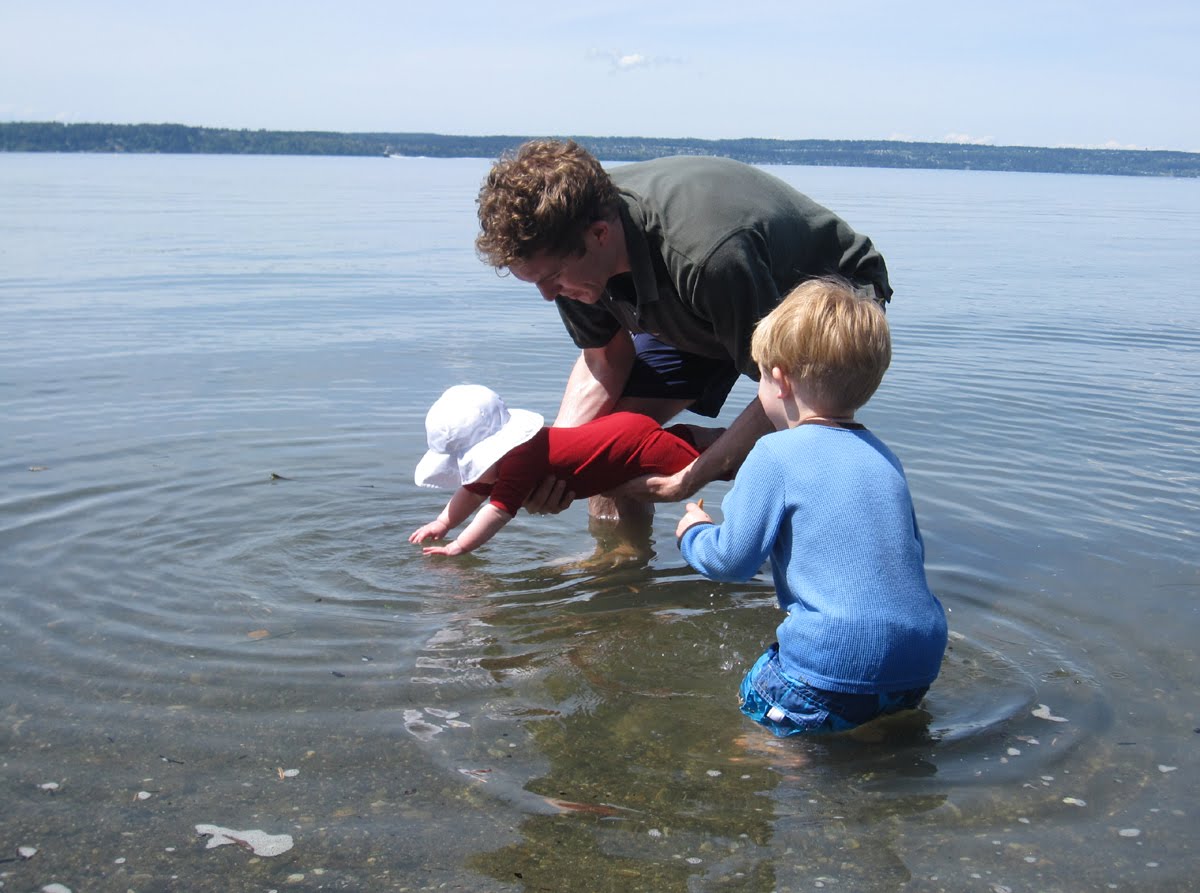 It's finally here: that elusive season that recharges our Northwest batteries - summer! Think beaches, camping, boats, pools, ice cream and yes, even sun!
It's finally here: that elusive season that recharges our Northwest batteries - summer! Think beaches, camping, boats, pools, ice cream and yes, even sun!
We all have our own play list of favorite summertime traditions, from days at the beach to relaxing poolside. Here's our list of ways to keep the season safe as we hit our summer stride.
1. When near water, stay nearby
Whether at a pool, lake or river, drowning happens quickly and often quietly, so never leave children alone. Laura Miccile, coordinator of Safe Kids Pierce County, says parents must actively supervise children. "That means not just talking to friends or reading a book," says Miccile.
With infants and toddlers, the American Academy of Pediatrics (AAP) says adults must be within arm's length, providing "touch supervision." There should always be a 5-foot fence around all sides of a pool, with self-closing gates that children cannot reach.
2. Be near those who can help
Make sure adults are trained in life-saving technique and CPR so they can rescue a child if necessary.
In pools, rescue equipment that should be on hand includes a shepherd's hook (a long pole with a hook on the end), a life preserver and a portable or cell phone to call 911 immediately in an emergency.
Just because a child has had swimming lessons does not mean they are safe. Drowning remains the second-leading cause of death for children aged 1 to 19, according to the AAP.
3. Wear life jackets
When swimming anywhere without a lifeguard on duty or whenever you're boating, riding a Jet Ski, tubing or doing other water sports, put the kids in life jackets and make sure they fit correctly.
King County Public Health officials point out that, even on the hottest summer day, our state's cold waters mean hypothermia is a big risk. Water temperatures in Puget Sound and our glacier-fed lakes are often in the 50s. Hypothermia can weaken and confuse even the strongest of swimmers.
Do not let the cost of life vests be a deterrent. Families can borrow life jackets for as long as a week for free through Mary Bridge Children's Hospital or Seattle Children's Hospital, or they can be found on this Google map of participating beaches. Families can also use this tip sheet and coupon for purchasing a discounted life-jacket at Big 5 Sporting Goods locations.
4. Follow boating safety rules
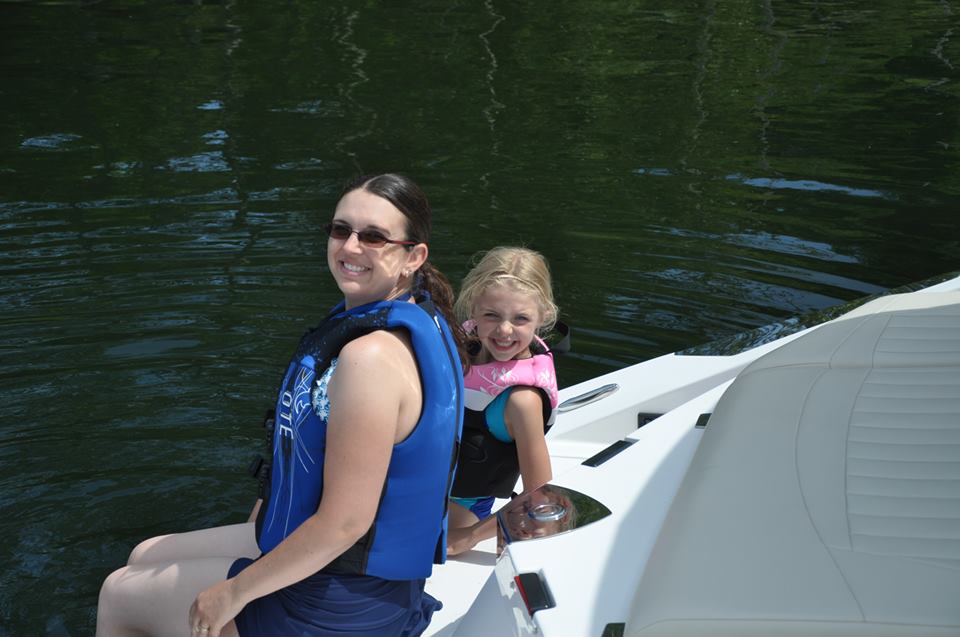 For some, summer boating is the best family time there is. By law, children ages 12 and younger must wear a Coast Guard-approved life jacket or vest on all vessels less than 19 feet in length.
For some, summer boating is the best family time there is. By law, children ages 12 and younger must wear a Coast Guard-approved life jacket or vest on all vessels less than 19 feet in length.
The Washington State Drowning Prevention Network reports that three-fourths of boating deaths could have been prevented if the person had been wearing a life jacket. Miccile, herself a member of the coalition, says most people who drown know how to swim. Even parents who consider themselves strong swimmers should model good behavior and wear life jackets while boating.
As with driving, parents can keep their children safer by keeping themselves alert and sober. In our state, boaters with a blood alcohol level of .08 percent and higher can be arrested for a BUI, or boating under the influence.
5. Know the water
Besides the cold temperatures in our lakes and the Sound, open water poses other challenges. Near rivers, watch for fast-moving waters. When swimming in the ocean, beware of rip currents. These are powerful currents and undertows that can quickly sweep a person off their feet and right out to sea. Washington State's Department of Health reminds beach-goers to obey warning signs and plan your recreation accordingly.
6. Screen the sun
With all of our cloudy days, it may seem hard to believe, but state health officials report the rate of the deadliest form of skin cancer, melanoma, is higher here than the national average.
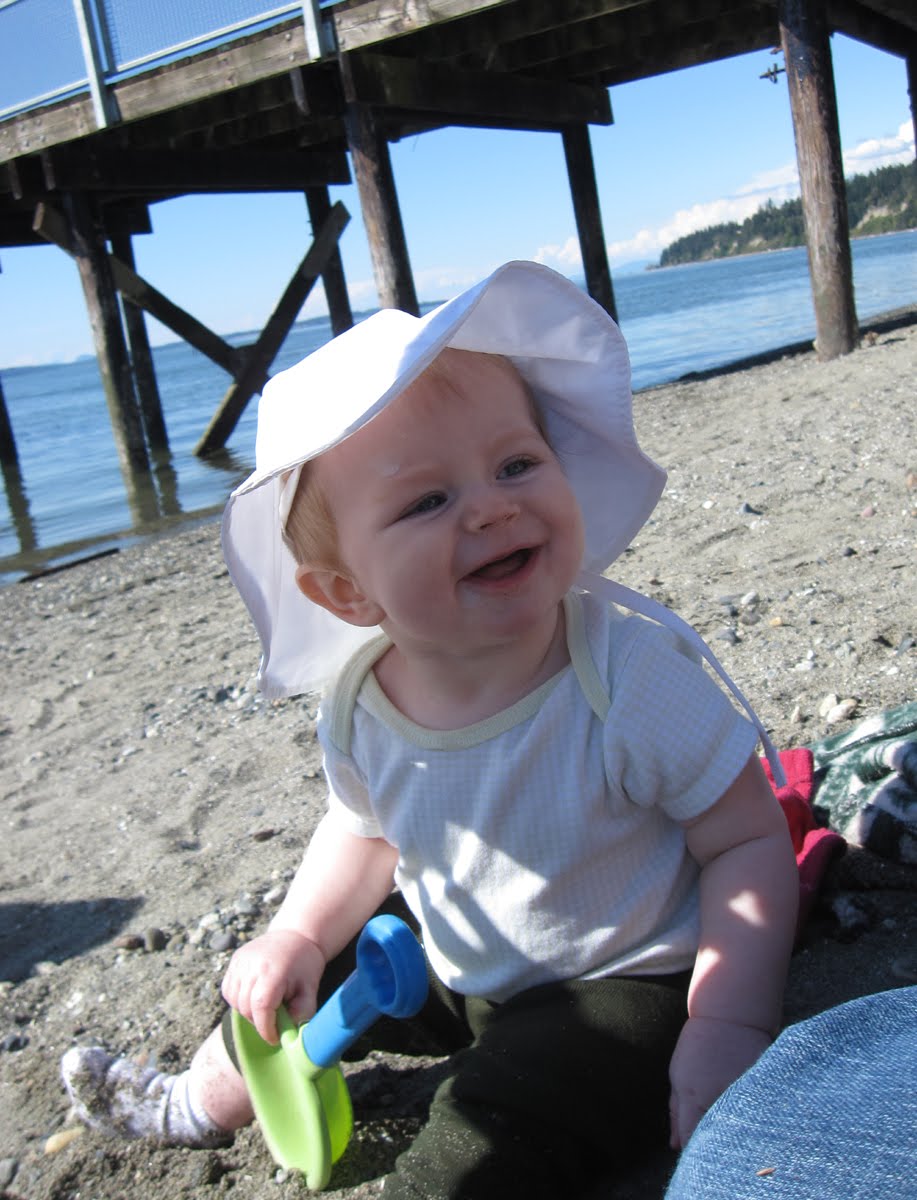
Sunburns are more common when hiking at higher altitudes and when on the water. But even at lowland beaches and parks, apply sunscreen with an SPF of 15 or higher 30 minutes before going outside. Reapply frequently if children are in the water.
Babies younger than 6 months of age should be kept out of the direct sunlight. Infants between 6 months and 2 years old can wear sunscreen, but you should also avoid exposing them during the most intense sun, usually between 10 a.m. and 4 p.m. Check out Environmental Working Group's recommendations for picking the safest and most effective sunscreens.
Baseball caps or other wide-brimmed hats are good for keeping sun off kids' faces. Long-sleeved, tight-weave cotton clothing and sunglasses are also smart choices in preventing long-term sun damage.
7. Keep the juices flowing
The AAP says once it gets really hot (as we all hope it does!) hydration is an issue in preventing heat stress. During an activity outside in the heat, periodic drinking should be enforced. For example, a child weighing about 90 pounds should drink 5 ounces of cold tap water or sports drink every 20 minutes. For a child weighing 130 pounds, up their intake to 9 ounces every 20 minutes, even if the child does not feel thirsty.
Clothing should be light-colored and lightweight. Sweat-saturated garments should be replaced with dry garments.
8. Fight the bite
When it comes to insect repellants, read the labels. Since 2003, the AAP has said that products with 30 percent DEET are actually no more harmful than products containing 10 percent DEET, but products used on children should contain no more than 30 percent. While combination sunscreen and insect repellant creams seem easy, the group recommends against them, as sunscreen needs to be applied more frequently than repellants.
Lotions with oil of lemon or eucalyptus are not for children younger than 3 years of age, according to the Centers for Disease Control and Prevention.
Only put repellant on exposed skin, not under clothing, and keep it out of cuts and scrapes as well as kids' eyes and mouths. Once the child comes inside, wash off the areas of skin treated with repellant using water and a mild soap.
9. Preach bicycle safety

For kids who cannot drive themselves around from one summer activity to another, riding a bike is the next best thing. It means freedom and speed. It is a great form of exercise. But, when kids do not wear helmets, it can mean head injuries, sometimes fatal ones.
Do not buy a helmet that is too big for your child so they can "grow into it." The helmet should rest flat on the child's head with chin straps secured snugly. If a helmet has been in a crash, toss it - it's no good anymore. Kohl’s Helmet Safety Program at Seattle Children’s has monthly fittings and giveaways, or you can check out King County's list of low-cost helmet resources .
Educate children about hand signaling: A left arm straight out indicates a left turn, the left arm bent up signals a right turn. Besides following traffic rules and signs, children should be reminded to walk bikes across busy intersections. Kids younger than 10 years of age should only ride on sidewalks.
10. Keep your eye on the playground
The easiest way for caregivers to keep kids safe on the playground is to supervise them. A 2-year-old may be able to climb to the top of the highest platform, but it does not mean they should be left up there alone.
Thomas Jinguji, M.D., an orthopedic specialist with Seattle Children's Hospital, says that for a child of any age, the seriousness of a fall depends less on the distance of the fall than on the surface below. Seek out play areas with shredded rubber, woodchips, sand or pea gravel. Avoid asphalt and cement surfaces; even short-distance drops on these surfaces can mean broken bones.
Kids should not wear helmets while on climbing equipment. A strap that gets caught is a strangulation hazard.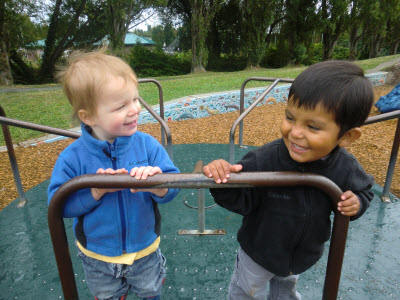
11. Be safe in your own yard
Just because children are within the confines of your yard does not mean they cannot get hurt.
In private homes, trampolines account for many injuries seen by Gordon Naylor, M.D., a pediatrician with Virginia Mason in Federal Way. "Kids still get hurt, most often from multiple kids bouncing at once with one getting bounced off." Even though many models come with enclosure nets, the AAP recommends against any kind of trampoline.
Still, Naylor is a big advocate of getting kids out and about in the summer. "Obesity is a bigger risk now to kids than injuries from playing outside, the vast majority of which are minor." In other words, playing in your yard is preferable to them lounging on the couch all summer!
12. Minimize travel dangers
Children traveling alone to visit relatives or attend summer camp should have a copy of their medical information on them at all times, according to the AAP.
The National Center for Missing and Exploited Children wants parents to give kids the tools to handle an emergency situation, such as if they get separated from their parents. For instance, a child should be taught not wander away from where they first became lost, says the the center. If a child stays put, chances are better they will be found more quickly.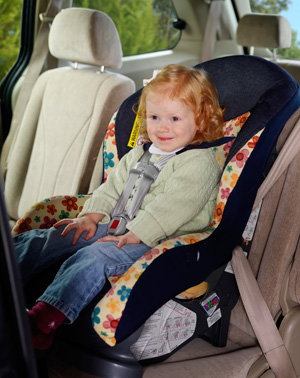
Children should make noise either by yelling, blowing a whistle or just attracting attention.
The center also urges parents keep up-to-date photos and descriptive information of their children in the event a child goes missing.
13. Use the right restraints
Whether it is seatbelts for older children or car seats for younger ones, proper restraints can make all the difference in how a child fares in a car crash. Help your child form a lifelong habit of buckling up.
Take advantage of local programs at fire departments and hospitals that offer free car-seat checks. Children in rear-facing car seats should never be placed in a front seat equipped with an air bag.
In fact, for all children, the back seat is preferable. It is the farthest away from the impact of a head-on crash, which is the most common type of collision.
The list of ways to get hurt this time of year may seem long, but, with a few simple, commonsense precautions, your family can make this a memorable summer — for all the right reasons.
Hilary Benson is a freelance writer living in the Seattle area with her family. Summer is her favorite time of the year. This article was originally written in 2008 and updated in 2013.











